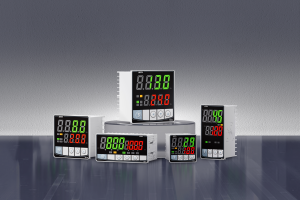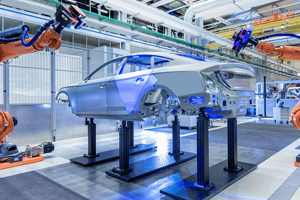How to Control Temperature Using a PID Controller: A Detailed Guide
Learn how to control temperature using a PID controller with our comprehensive guide. Understand the setup, configuration, and tuning process for precise temperature regulation. Follow expert tips for optimal performance.
1. Introduction
Temperature control is essential in various industrial and domestic settings, from maintaining ideal incubator environments to manufacturing processes requiring precise temperature regulation. A PID controller (Proportional-Integral-Derivative) device provides accurate temperature regulation; this guide will outline its usage to help achieve accurate regulation.
2. Understanding PID Controllers
PID (Proportional, Integral and Derivative) controllers are advanced feedback loop mechanisms commonly utilized by industrial control systems. Their design incorporates three control terms that contribute towards overall output: Proportional, Integral and Derivative.
1. Proportional (P): This term generates an output value that relates directly to the current error value, with proportional response adjustable via changing gain settings; increasing gains can speed up responses but may increase instability risks.
2. INNTERGRAL (I): If an error has lingered for some time, its cumulative effect can increase with each passing second; thus minimizing or even eliminating residual steady state errors associated with pure proportional controllers.
3.
Derivative (D): The derivative term predicts future errors based on their rate of change, helping reduce overshoot and enhance system stability.
3. Components and Setup
In order to set up a PID controller for temperature regulation, you will require several essential items. They include:
* PID controller unit and temperature sensor (thermocouple or RTD).
* Actuator (such as heater or cooler )
4. Steps for Connecting and Setting Up Hardware:
Mount Your PID Controller: When mounting your PID Controller in an accessible and visible place.
Attach Your Temperature Sensor To The PID Controller: Attaching a temperature sensor directly to the PID controller is best and ensure that its locati0n matches that which requires temperature regulation.
Connect Actuator (Heater or Cooler) to PID Controller: Once linked, this actuator (heater or cooler) can respond to output of PID Controller to adjust temperature as directed.
nettoyage Power Up the System: Once connected and powered up, connect power from an outside source directly into the PID controller and turn it on - its display should illuminate as an indication of system functionality.
After installing the hardware, the next step should be configuring a PID controller.
Initial Set Up: Pressing 'SET' will bring up the configuration mode; navigate through its menus until reaching initial configuration options.
darui Set Your Desired Temperature (Setpoint): Use the up and down arrows to set your ideal target temperature that the system will seek to maintain. This "setpoint" setting represents your goal temperature that should remain static during its maintenance cycle.
rov Anpassung PID Parameters: Establish the Proportional, Integral and Derivative values by configuring Proportional (P), Integral (I), and Derivative values accordingly to obtain optimal performance from these parameters.
5. Tuning the PID Controller
Tuning a PID controller involves finely tuning its values by manipulating P, I, and D to achieve optimal performance. There are various approaches available for tuning:
(Manual Tuning): For manual tuning, manually adjusting PID parameters and monitoring system response are both needed. Begin with increasing proportional gain until your system oscillates before making further adjustments for integral and derivative gains until stabilization has taken place.
Ziegler-Nichols Method: This heuristic tuning approach offers a systematic method for finding PID parameters. To use, set I and D terms to zero while gradually increasing P to cause oscillation; once oscillation ceases use the ultimate gain and period to calculate your PID parameters.
Autotuning: Some PID controllers feature an autotuning function which automatically adapts the PID parameters according to system response, thus streamlining operation of these PID controls.
Implement Temperature Control
To implement temperature control using a PID controller, follow these steps.
Establish the Desired Temperature: Enter a setpoint value into the PID controller. 2. Monitor Your System: Keep an eye on temperature readings and controller output as your PID will automatically adjust itself in order to maintain desired temperatures.
Slightly Adjust the Parameters: For better control, fine-tune your PID parameters for improved results if necessary by making minor modifications to P, I, and D values as required.
Monitoring and Adjustments, PID Controller Performance: Tips
Regular Monitoring: Make regular temperature reading checks to make sure temperatures fall within their target ranges.
Adjust Upon Feedback: If the system does not function as expected, adjust its PID parameters by increasing or decreasing either P, I, or D values until performance meets expectation.
Toward Continuous Optimization of PID Parameters Using Feedback From Sensors (PIDS).
Keep Log Data: Maintain a record of temperature readings and PID settings to assist in troubleshooting or future tuning efforts. Doing this may prove invaluable.
Troubleshooting Common Issues
Here are a few issues and their potential solutions you might experience:
Suppress Temperature Oscillations: If temperature oscillations occur around your setpoint, try decreasing proportional gain or increasing derivative gain to correct.
When system responds slowly to temperature changes, increase proportional gain or reduce integral gain as appropriate to get system up and running quickly again.
When temperature varies quickly relative to setpoint values: reduce proportional gain while increasing integral gain until response becomes immediate
Steady-State Error: If there is a steady-state error, increase the integral gain until it disappears over time.
6. Conclusion
PID temperature controllers offer precise and dependable temperature regulation in various industrial and domestic settings, making them essential components in temperature regulation systems. By understanding its components, setup process, tuning process, monitoring procedure and adjustments process you can effectively implement and maintain one in your own system for consistent temperature regulation.
- How to Set Temperature Controller XH-W3001: A Step-by-Step Guide
- How to Set Up an Inkbird Temperature Controller: A Comprehensive Guide























